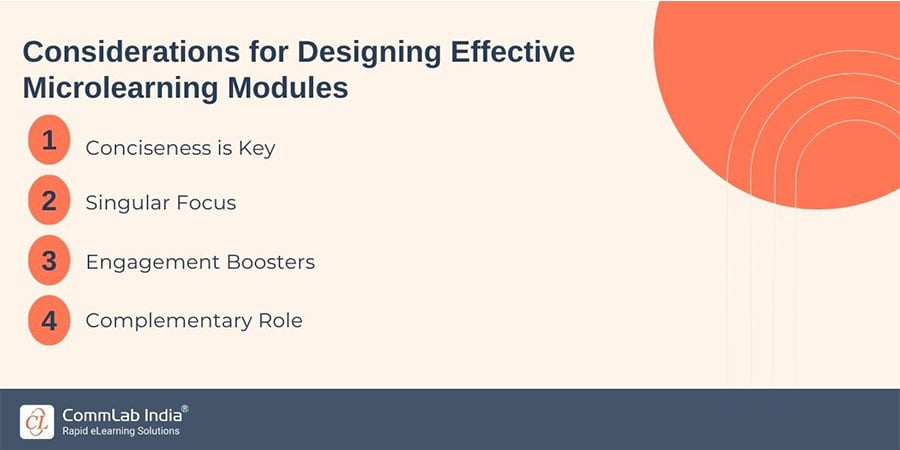Mastering Skills with Microlearning: A Guide to the Game-Changer
Microlearning, the bite-sized approach to employee learning, is the best way to nourish your employees’ skill and how? Continue reading to explore!

In today's rapidly evolving world, the importance of skill-building cannot be overstated. As industries transform and job roles shift, the need to acquire and enhance skills has become a constant. However, current day employees don’t prefer being tied down to the traditional classroom environment in the name of skill development training! Enter microlearning—a revolutionary approach to learning that is transforming how we acquire and master skills.
But what makes microlearning the best approach to skill development and training? Read on to discover...
Microlearning is the Best Suit for Skill Building
It provides numerous advantages, such as:
- Enhanced flexibility
- Improved information retention
- Reduced information overload
- Effortless adaptation
- Enhanced integration
Understanding Microlearning
Microlearning is a game-changer in the realm of learning and development. It has been shown to be an effective way to improve employees' performance, especially when it comes to mastering new skills. But what exactly is microlearning?
Microlearning is a contemporary training strategy that delivers learning content in bite-sized, easy-to-digest modules. These concise units, usually delivered via short videos or audio clips or images, focus on specific concepts, making learning manageable and engaging. The essence of microlearning lies in its flexibility; it accommodates various learning styles and is easily digestible.
The Science Behind Microlearning's Effectiveness

Cognitive load theory plays a significant role in understanding why microlearning works. According to this theory, the capacity of a person's working memory influences their ability to process and learn new information. It suggests that there's a limit to how much information a person can effectively handle at once, and when this limit is exceeded, it can lead to cognitive overload and hinder learning.
And this is where microlearning works its charm. By presenting information in smaller chunks, microlearning reduces cognitive overload, allowing learners to absorb and process information more effectively. Additionally, spaced repetition, a technique embraced by microlearning, reinforces learning over time, leading to better retention.
Let us now discuss why microlearning is the best suit for skill building:
Microlearning for Skill Building
Microlearning is an excellent way to build skills. It allows learners to focus on a specific skill, receive immediate feedback, and practice repeatedly until they feel confident.
When used for skill building, microlearning can be an extremely powerful tool. By providing learners with targeted content that is easily digestible, microlearning can help them quickly acquire and master new skills. Additionally, the ability to immediately receive feedback and practice frequently encourages mastery of the material.
Benefits of Microlearning in Skill Building
Microlearning, which is currently a top instructional design approach to deliver eLearning content, is self-paced and easy to access. Other benefits associated with it include,
- Microlearning offers flexibility, accessible anytime, anywhere.
- Bite-sized content aids information retention.
- Targets specific skills, preventing information overload.
- Modules swiftly adapt to industry or organizational changes.
- Affordable and seamlessly integrates into existing learning initiatives.
→ Download Now: Where Does Microlearning Fit in Your Learning Strategy?
Designing Effective Microlearning Modules
When it comes to designing effective microlearning modules, there are a few key things to keep in mind:

1. Conciseness is Key: Modules must be concise, delivering information clearly and succinctly. Avoid overwhelming learners or causing them to lose track within the content.
2. Singular Focus: Each microlearning module should center around a single skill or concept. This ensures better comprehension and retention by simplifying the learning objective.
3. Engagement Boosters: Incorporate dynamic elements like videos, quizzes, games, and interactive segments. These not only maintain learner interest but also reinforce core concepts effectively.
4. Complementary Role: Microlearning is an enhancement to traditional learning methods, not a substitution. Design modules that seamlessly align with other learning resources like textbooks and lectures.
Following these key considerations will help you create impactful microlearning modules that empower learners to confidently master the skills they seek.
Future Trends and Innovations in Microlearning
As microlearning becomes more popular, there are a few key trends and innovations that we can expect to see in the coming years:
1. Increased use of mobile devices for microlearning. Smartphones and tablets are an indispensable part of adult lives. This is also a reason for the rise in the use of microlearning content for corporate training delivery. This is particularly convenient for learners who are on the go or have limited time for formal learning sessions. This trend will continue for the years to come.
2. More personalized and targeted content. As microlearning platforms become more sophisticated, they will be better able to deliver content that is tailored to each individual learner’s needs and preferences. This will make the learning experience more engaging and effective.
3. Greater use of gamification techniques. Gamification is a great way to keep learners engaged and motivated. We can expect to see more microlearning courses incorporating elements of gaming, such as points, badges, and leaderboards.
4. More real-time feedback loops. Microlearning provides an opportunity for learners to receive immediate feedback on their performance. This helps them to identify areas where they need improvement and enables them to track their progress over time.
Explore popular microlearning formats:
Wrapping Up
In today's digital world, microlearning is a powerful tool for mastering skills. With its bite-sized chunks of information, learners can easily absorb information and quickly obtain the knowledge they need to reach their goals faster. Businesses in particular are seeing tremendous benefits from using microlearning for training purposes as it promotes quicker learning and more measurable results. We hope this guide has given you some insights on how important microlearning is to our current workforce and why it’s here to stay.
Excited to leverage the power of microlearning for skill building? Delve deeper by exploring our comprehensive eBook.
This resource will equip you with practical strategies and insights to excel through microlearning.
Get your copy today!!



![Microlearning: 7 Training Challenges Can Overcome [Infographic]](https://blog.commlabindia.com/hubfs/Imported_Blog_Media/microlearning-trends-2021.jpg)

